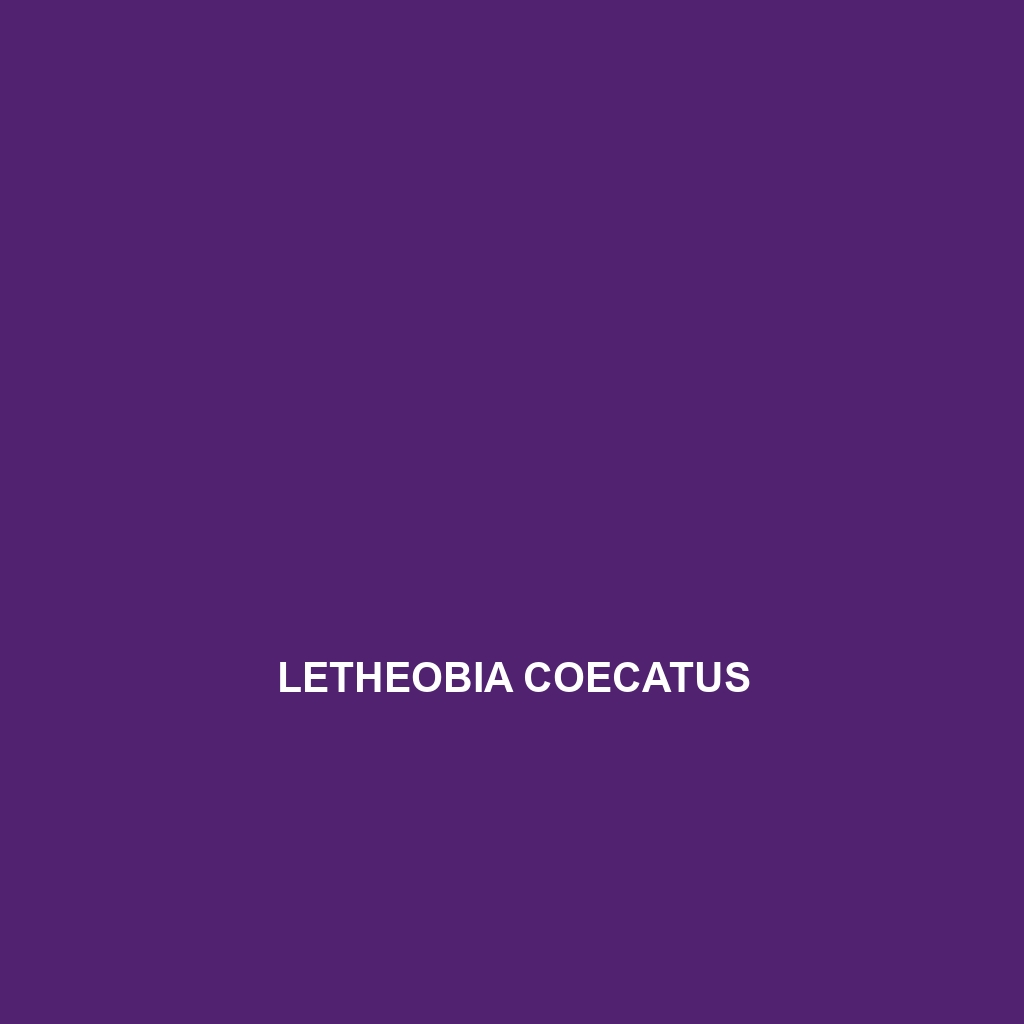Common Name
Letheobia coecatus
Scientific Name
Letheobia coecatus
Habitat
The Letheobia coecatus, commonly known as the West African worm snake, primarily inhabits the dense, humid environments of West Africa. Predominantly found in rainforests, these snakes prefer warm, moist conditions where they can easily burrow into the leaf litter or soil. They are often seen in regions characterized by tropical climates and thrive in the undergrowth of these forest ecosystems. In addition to their typical rainforest homes, Letheobia coecatus can also inhabit nearby savannas and the peripheries of wetland areas, where they can find sufficient cover and prey availability.
Physical Characteristics
Letheobia coecatus is a relatively small snake, usually measuring between 30 to 60 centimeters in length. Its body is slender and elongated, making it well-adapted for a life spent mostly underground or beneath the leaf litter. The coloration of Letheobia coecatus is typically a dull brown or grey, which serves as effective camouflage in its leaf-strewn habitat. Some individuals may exhibit a pattern of lighter and darker bands along their bodies, helping them blend into their surroundings. A key characteristic is their smooth scales, which contribute to their burrowing capability, as well as a relatively pointed snout that aids in navigating through soil and foliage.
Behavior
Primarily nocturnal, Letheobia coecatus is most active during the night, when temperatures are cooler, and humidity levels are higher. This behavior allows them to avoid the heat of the day and reduces water loss. Their social interactions are minimal, as these snakes are mostly solitary creatures, only coming together during the mating season. A noteworthy behavior is their ability to burrow; they use their smooth body and pointed snout to navigate through soft, loose soil. During this burrowing, they may also create small tunnels, which can impact their local ecosystem.
Diet
As a primarily insectivore, Letheobia coecatus feeds mainly on small invertebrates, including earthworms, slugs, and various species of insects. Their diet reflects the rich biodiversity found in their rainforest habitat, providing ample food resources. These snakes have adapted special feeding patterns, using their acute sense of smell to locate prey hidden in the soil or leaf litter. They employ a constriction method to subdue their prey, demonstrating an efficient predatory strategy that minimizes energy expenditure.
Reproduction
The reproductive cycle of Letheobia coecatus is interesting, typically occurring during the warmer, more humid months of the year. After a mating ritual that can involve intricate body displays, females lay around 4 to 7 eggs in moist, secluded areas, ensuring higher humidity for the developing embryos. The gestation period varies, lasting approximately 60 to 90 days, after which the hatchlings emerge fully formed and independent. Parental care is absent post-hatching, as the young snakes are left to fend for themselves in their environment. This method of reproduction mirrors the strategies of many other reptiles in similar ecological niches.
Conservation Status
Currently, the conservation status of Letheobia coecatus is classified as least concern by the IUCN Red List. However, habitat loss due to deforestation and land development poses significant challenges to their populations. Conservation efforts are focused on habitat preservation, aiming to maintain the integrity of their rainforest ecosystem. Protecting their natural habitats is crucial for ensuring that Letheobia coecatus continues to thrive in the wild, as destruction of their environment could lead to their decline over time.
Interesting Facts
One fascinating aspect of Letheobia coecatus is its ability to detect low-frequency vibrations through the ground, which aids in locating prey even when it is buried. This adaptation is particularly unique among snakes, making them effective hunters in their humid and dark environments. Additionally, these snakes have been observed displaying a defensive behavior where they coil up and flatten their body to appear larger when threatened, deterring potential predators.
Role in Ecosystem
Letheobia coecatus plays a critical role in its ecosystem by maintaining the balance of invertebrate populations. As a natural predator, it helps control the numbers of insects and other small invertebrates, contributing to the health of the soil through its feeding habits. Furthermore, as prey for larger mammals and birds, Letheobia coecatus is integral to the food web in the rainforest ecosystem. Its presence indicates a healthy, functioning ecosystem, making it a key species for ecological studies and conservation efforts in West Africa.
